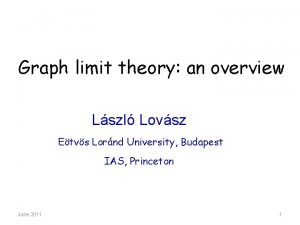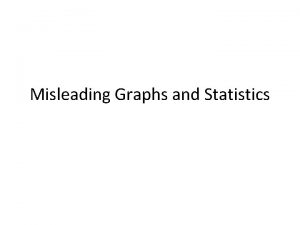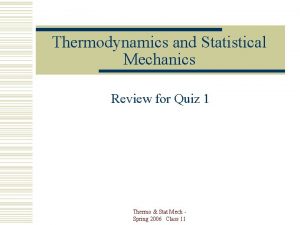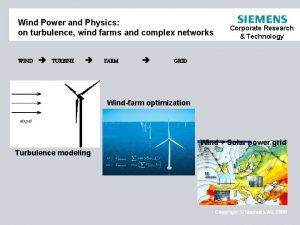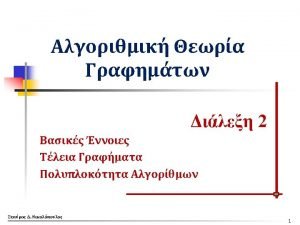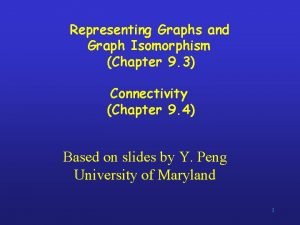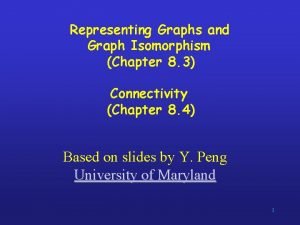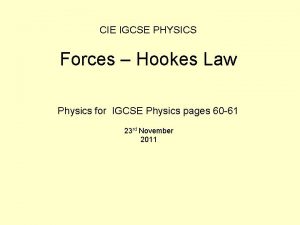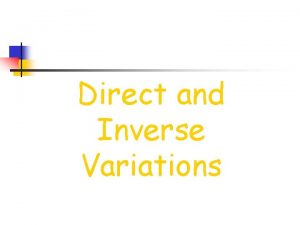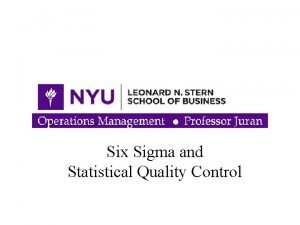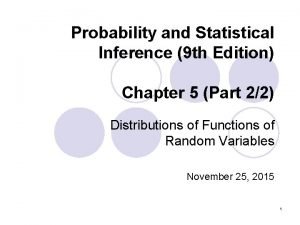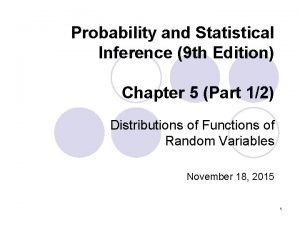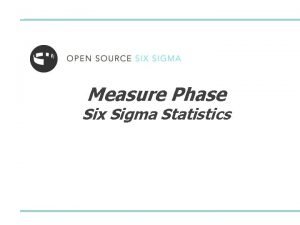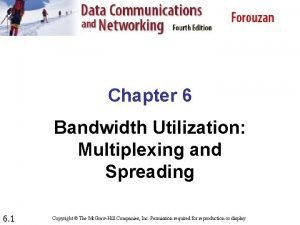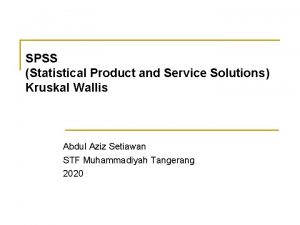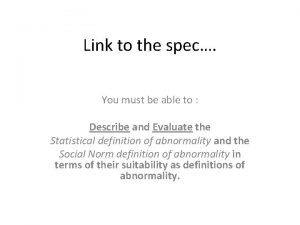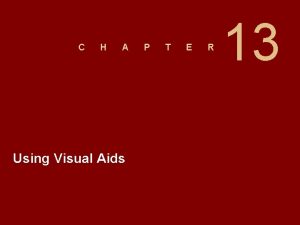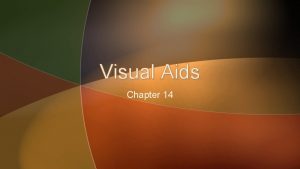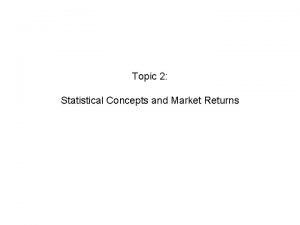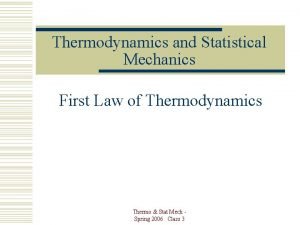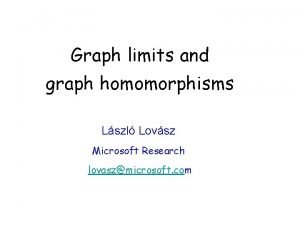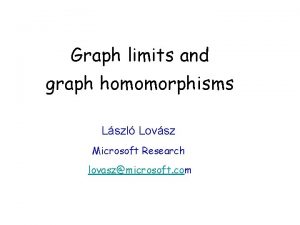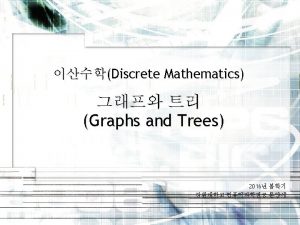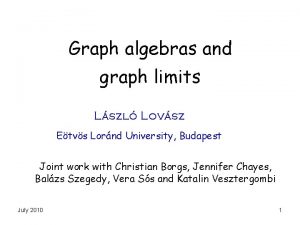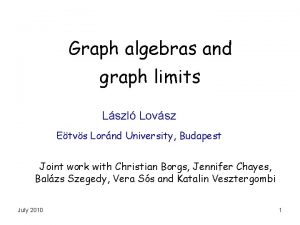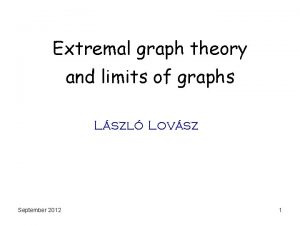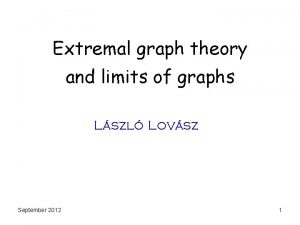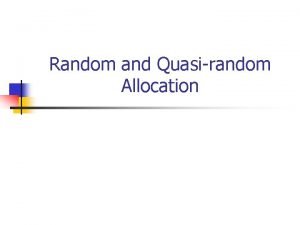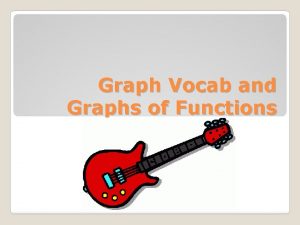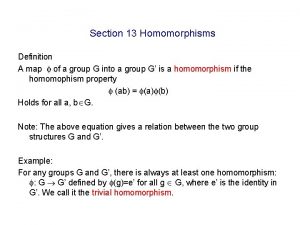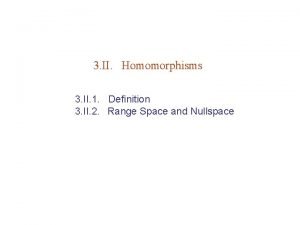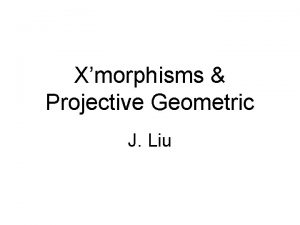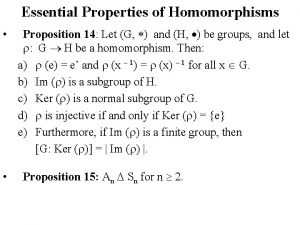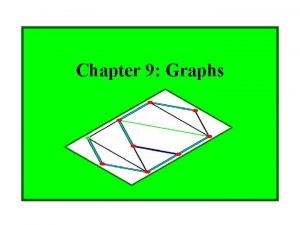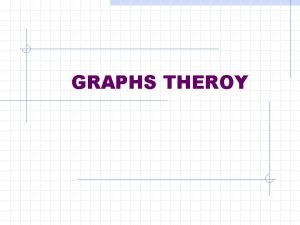Graph homomorphisms statistical physics and quasirandom graphs Lszl


































- Slides: 34

Graph homomorphisms, statistical physics, and quasirandom graphs László Lovász Microsoft Research lovasz@microsoft. com Joint work with: Christian Borgs, Jennifer Chayes, Mike Freedman, Jeff Kahn, Lex Schrijver, Vera T. Sós, Balázs Szegedy, Kati Vesztergombi

Homomomorphism: adjacency-preserving map coloring independent set triangles

Weighted version:

G connected

L 1966

Homomorphism density: probability that random map is a homomorphism every node in G weighted by 1/|V(G)| Homomorphism entropy:

Examples: if G has no loops

3 3 -1 1/4 -1 -1 -1 1/4 -1 3 H 1 1 2 1 1 H 3

Hom functions and statistical physics atoms are in states (e. g. up or down): interaction only between neighboring atoms: graph G energy of interaction: energy of state: partition function:

partition function: sparse G bounded degree All weights in H are 1 hard-core model H=Kq, all weights are positive soft-core model dense G

Recall: : set of connected graphs Erdős – Lovász – Spencer

Kruskal-Katona 1 Goodman 0 1/2 2/3 3/4 1 Bollobás Lovász-Simonovits

small probe (subgraph) small template (model) large graph

Turán’s Theorem for triangles: Kruskal-Katona Theorem for triangles: Erdős’s Theorem on quadrilaterals:

Connection matrices k-labeled graph: k nodes labeled 1, . . . , k Connection matrix (for target graph G):


Main Lemma: is positive semidefinite has rank reflection positivity

Proof of Kruskal-Katona k=1 k=2

How much does the positive semidefinite property capture? . . . almost everything!

Connection matrix of a parameter: graph parameter is positive semidefinite has rank reflection positivity equality holds in “generic” case (H has no automorphism)

k-labeled quantum graph: finite sum is a commutative algebra with unit element Inner product: positive semidefinite suppose = . . .


Distance of graphs: Converse? ? ?

Quasirandom graphs Thomason Chung – Graham – Wilson (Gn: n=1, 2, . . . ) is quasirandom, if d(Gn, G(n, p)) 0 a. s. Example: Paley graphs p: prime 1 mod 4 How to see that these graphs are quasirandom?

For a sequence (Gn: n=1, 2, . . . ), the following are equivalent: (Gn) is quasirandom; simple graph F; for F=K 2 and C 4. Chung – Graham – Wilson Converse if G’ is a random graph.


Suppose that Want: k=1: . . . 1 p p p 2 pk pk+1 . . .

k=2: p 2 p 4 p 2 k+2 . . 1 . .

k=deg(v). . . . 1 pk pk p 2 k . . . p|E(G’)| p|E(G)|

Generalized (quasi)random graphs 0. 1 0. 5 density 0. 2 0. 7 0. 3 0. 2 0. 1 n 0. 4 0. 5 0. 2 0. 4 n 0. 2 n 0. 35 0. 3 n density 0. 35 For a sequence (Gn: n=1, 2, . . . ), the following are equivalent: d(Gn, G(n, H)) 0; simple graph F;

Recall: (Gn) left-convergent: (Gn) right-convergent:

Example: (C 2 n) is right-convergent But. . . (Cn) is not convergent for bipartite H

Any connection between left and right convergence?

Graphs with bounded degree D (Gn) left-convergent: e. g. H=Kq, q>8 D
 Graph limit theory
Graph limit theory Lszl charts
Lszl charts Software implementation of state graph
Software implementation of state graph Graphs that enlighten and graphs that deceive
Graphs that enlighten and graphs that deceive Misleading graphics
Misleading graphics Networks and graphs: circuits, paths, and graph structures
Networks and graphs: circuits, paths, and graph structures Comparing distance/time graphs to speed/time graphs
Comparing distance/time graphs to speed/time graphs 5-3 practice polynomial functions
5-3 practice polynomial functions Statistical physics quiz
Statistical physics quiz Statistical physics
Statistical physics Algorithmic graph theory and perfect graphs
Algorithmic graph theory and perfect graphs Representing graphs and graph isomorphism
Representing graphs and graph isomorphism Representing graphs and graph isomorphism
Representing graphs and graph isomorphism Weight and stretching physics
Weight and stretching physics Indirect variation graph
Indirect variation graph Resource allocation graph and wait for graph
Resource allocation graph and wait for graph Why does it happen
Why does it happen University physics with modern physics fifteenth edition
University physics with modern physics fifteenth edition Example ib physics ia
Example ib physics ia Line graph graph theory
Line graph graph theory How to understand graphs and charts
How to understand graphs and charts Statistical symbols and meanings
Statistical symbols and meanings Chebyshev's inequality
Chebyshev's inequality Probability and statistical inference 9th solution pdf
Probability and statistical inference 9th solution pdf Statistics symbols cheat sheet
Statistics symbols cheat sheet Multilevel multiplexing
Multilevel multiplexing Testimonial, statistical, analogical, and andoctal
Testimonial, statistical, analogical, and andoctal Kruskal wallis spss
Kruskal wallis spss Statistical infrequency strengths
Statistical infrequency strengths A visual aid used to show statistical trends and patterns.
A visual aid used to show statistical trends and patterns. A visual aid used to show statistical trends and patterns.
A visual aid used to show statistical trends and patterns. Statistical institute for asia and the pacific
Statistical institute for asia and the pacific Statistical product and service solutions
Statistical product and service solutions Statistical concepts and market returns
Statistical concepts and market returns Dulong petit law
Dulong petit law
